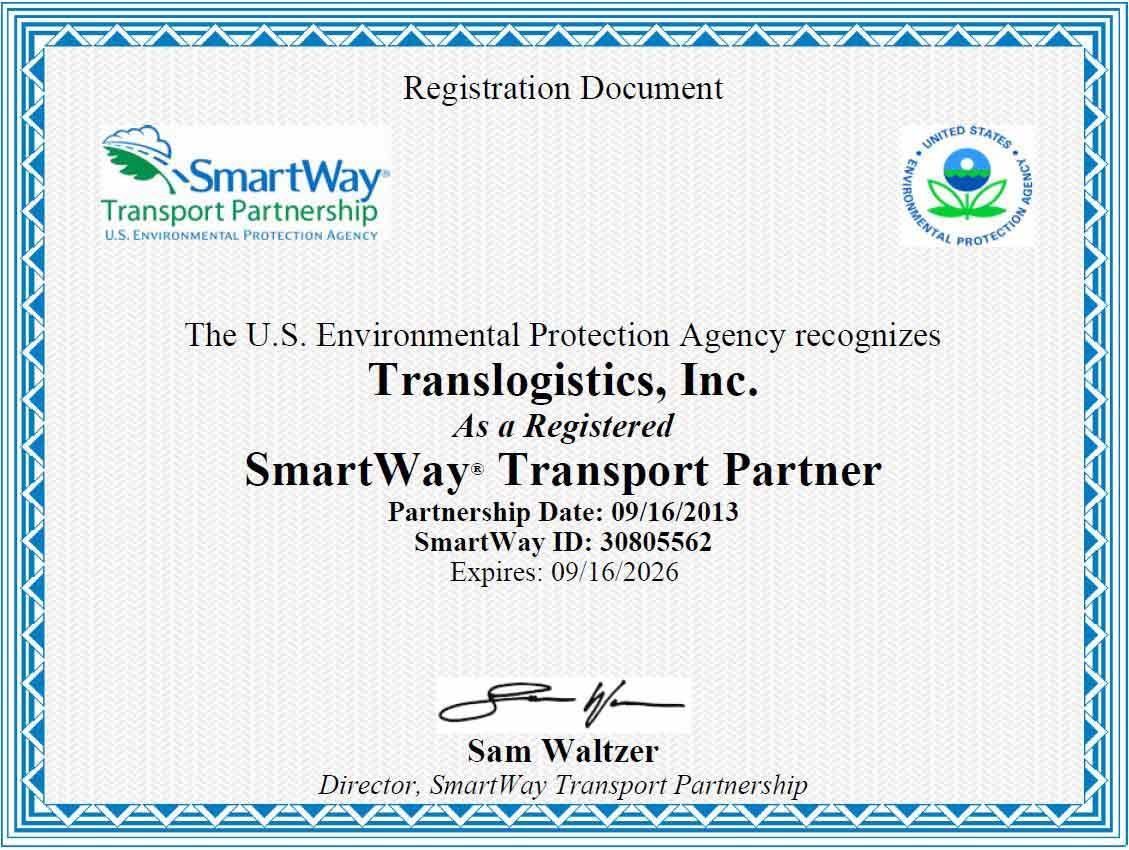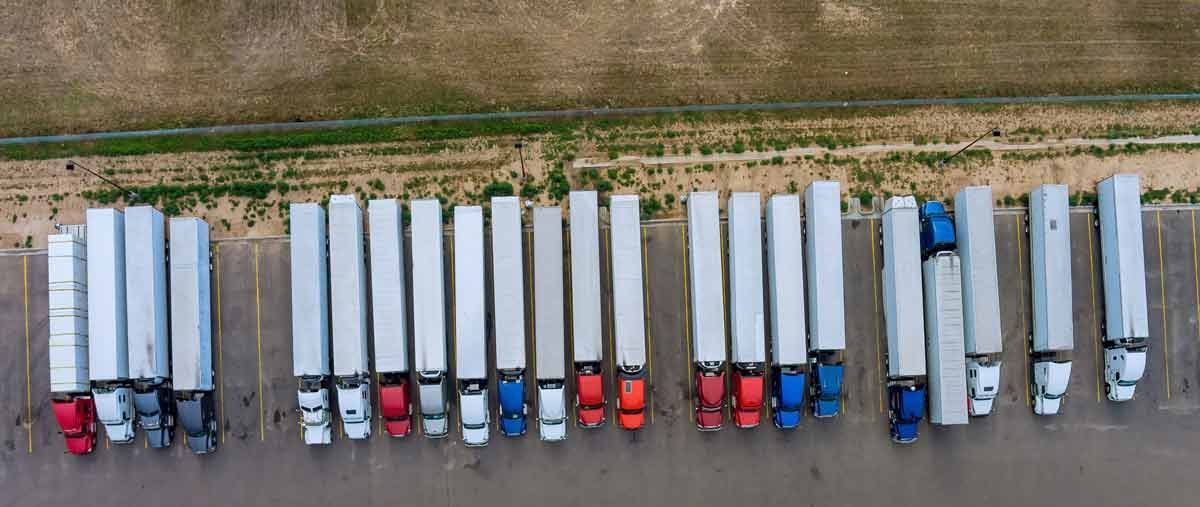Responsible Tractor-Trailer Driving: Tips for Truck Drivers
Truckload Safety Tips
The safety of the driver, the cargo, and other road users should always be the top priority of a responsible driver. In this brief article, the TLI team will discuss a comprehensive list of tips to help tractor-trailer drivers ensure their safety and the safety of others on the road. From following Hours of Service (HOS) rules to personal habits and emergency preparedness, we've got you covered.

Hours of Service (HOS) Rules
One of the most critical aspects of truck driving safety is adhering to HOS regulations. These rules are designed to prevent driver fatigue, reduce accidents, and improve road safety. Fatigued drivers exhibit decreased reaction times, impaired decision-making abilities, and a higher likelihood of making critical errors. By limiting the number of consecutive driving hours and requiring regular rest breaks, HOS rules reduce the risk of accidents caused by driver fatigue.
Make sure to:
- Keep accurate and up-to-date logbooks.
- Take required rest breaks and adhere to driving time limits.
- Avoid exceeding the maximum number of working hours.
Avoid Cell Phone Use
Distracted driving is a significant contributor to traffic accidents, and the use of cell phones is a major distraction. According to the National Highway Traffic Safety Administration (NHTSA), sending or reading a text message takes your eyes off the road for an average of five seconds. At highway speeds, this is equivalent to driving the length of a football field blindfolded. For truckload drivers, whose vehicles require more time and space to maneuver safely, this level of distraction can have catastrophic consequences. Distracted driving is a leading cause of accidents. Put your cell phone away while driving. Use a hands-free device for essential calls, but avoid texting, browsing, or any other distracting activities.
Wear Seat Belts
Many modern commercial vehicles are equipped with airbags as an added safety feature. However, airbags are designed to work in conjunction with seat belts. Without a seat belt, the force of an airbag deployment can itself be harmful. In the case of a crash, a properly fastened seat belt ensures that the driver is in the right position to benefit from the protective action of airbags.
Ejection from the vehicle during a crash is one of the most severe consequences of not wearing a seat belt. Truckload drivers, due to the height of their cabs and the force generated during a collision, face a high risk of being thrown from the vehicle if not properly restrained. Ejection dramatically increases the likelihood of severe injury or fatality. Seat belts save lives. Always wear your seat belt and encourage passengers to do the same.
Watch Your Blind Spots
Tractor-trailers have large blind spots. Make a habit of checking your mirrors regularly to be aware of vehicles around you. Adjust your mirrors correctly to minimize blind spots. Blind spots, often referred to as "no-zones," are the areas around a vehicle that the driver cannot see directly using mirrors. For truckload drivers, these blind spots are considerably larger than those of a standard passenger vehicle.
The primary blind spots for a typical commercial truck include:
- Front Blind Spot: This area is directly in front of the truck's bumper and can extend several feet. It is usually a blind spot for drivers of all vehicles but is especially critical for trucks due to their longer hoods.
- Rear Blind Spot: This area is directly behind the truck and can extend for several car lengths. It is especially challenging for truckload drivers when changing lanes or backing up.
- Right-Side Blind Spot: This blind spot extends from the passenger-side mirror and can hide other vehicles, pedestrians, or cyclists. Trucks often have a more substantial right-side blind spot than the left.
- Left-Side Blind Spot: The left-side blind spot is typically smaller than the right-side blind spot but still poses a significant risk, especially when making left turns or merging onto highways.

Avoid Lane Changes
Frequent lane changes can increase the risk of accidents. Stay in your lane, and only change lanes when necessary. Unnecessary lane changes refer to shifting from one lane to another without a valid reason or clear benefit. These actions can have several negative consequences, affecting the driver, the flow of traffic, and overall road safety:
- Increased Risk of Accidents: Frequent lane changes, especially in heavy traffic, increase the likelihood of accidents. Each time a truckload driver changes lanes, there is a risk of colliding with other vehicles, which can lead to property damage, injuries, and fatalities.
- Traffic Disruption: Unnecessary lane changes disrupt the flow of traffic and can create congestion and bottlenecks on the road. This not only inconveniences other drivers but can also lead to more traffic accidents.
- Fuel Inefficiency: Frequent lane changes consume more fuel due to the acceleration and deceleration involved. This can result in higher operating costs for truckload drivers and their companies, which can be particularly detrimental for long-haul operations.
- Driver Stress: Excessive lane changes can increase driver stress and fatigue. Constantly weaving through traffic can be mentally and physically draining, which can impair a driver's ability to make sound judgments and respond to unexpected situations.
Use a Truck GPS
One of the most notable distinctions between truckload GPS and Google Maps GPS is the level of route customization. Google Maps provides routes optimized for regular passenger vehicles. These routes may not consider specific restrictions and requirements associated with large trucks, such as weight limits, low bridges, and hazardous materials restrictions.
Truckload GPS, on the other hand, is designed to cater to the needs of commercial truck drivers. It offers customizable routing options that consider the size and weight of the vehicle, as well as any applicable restrictions. This customization is crucial for ensuring that trucks take routes that are both legal and safe. Invest in a truck-specific GPS system for accurate routing.
Drive the Speed Limit
Speeding not only endangers your life but also increases the risk of accidents. Obey speed limits and slow down in adverse weather conditions. One of the primary reasons for adhering to speed limits is to prevent accidents. When you drive too fast, you reduce your reaction time, making it difficult to respond to unexpected situations, such as a sudden lane change or a pedestrian crossing the road. By driving within the speed limit, you give yourself the necessary time to react and avoid potential accidents.
The faster you drive, the more kinetic energy your vehicle possesses, and the greater the damage it can cause in a collision. Driving within the speed limit can significantly reduce the force of impact, which, in turn, reduces the risk of serious injury or even death for all involved parties.
Use Auxiliary Brakes
Truckload auxiliary brakes, often referred to as auxiliary braking systems, are additional mechanisms or devices installed in commercial trucks to assist in slowing down or stopping the vehicle. These systems are used to supplement the primary service brakes (such as hydraulic brakes) and are particularly important for large trucks, which often carry heavy loads and may need extra braking power to ensure safe operation. Auxiliary brakes, such as engine compression brakes or exhaust brakes, help control your speed on steep descents, reducing the wear and tear on your regular braking system.
Plan Your Trip in Advance
Before hitting the road, plan your route, stops, and rest breaks. Knowing your route in advance can help you avoid last-minute decisions that might compromise safety. Advanced trip planning allows drivers to take necessary precautions and reduce potential risks. By researching their routes in advance, they can identify potential hazards such as construction zones, severe weather, and high-traffic areas. Armed with this knowledge, drivers can adjust their schedules, opt for alternative routes, or even decide to delay their trips if safety conditions are compromised.
Make Wide Turns Carefully
With great power comes great responsibility, and one of the most critical responsibilities of truckload carriers is making wide turns with utmost care. Tractor-trailers have a longer wheelbase, making turns more challenging. A "wide turn" refers to a situation where a large truck, such as a tractor-trailer (also known as an 18-wheeler), needs to make a turn that requires a larger turning radius than a standard passenger vehicle. Due to the size and length of these trucks, they often need more space to navigate turns safely.
When a truck driver needs to make a wide turn, they typically swing the front of the truck out in the opposite direction of the turn before initiating the actual turn. This maneuver helps the truck clear obstacles like curbs, lamp posts, or other vehicles on the inside of the turn. Once the front of the truck is clear, the driver can then complete the turn safely.
Wide turns are necessary to avoid accidents and to ensure that the truck can navigate tight intersections or corners without damaging property or endangering other road users. It's important for both truck drivers and other drivers on the road to be aware of the need for wide turns when sharing the road with large trucks to promote safety. Always take wider turns to avoid collisions with curbs, vehicles, or pedestrians.
Keep a Safe Distance
Trucks, especially those carrying full loads, have longer stopping distances due to their increased weight and inertia. This means that if a truck is following too closely, it may not have enough space to come to a complete stop in the event of a sudden slowdown or emergency. A safe following distance provides a buffer zone for the driver to slow down gradually and avoid rear-end collisions. Maintain a safe following distance to give yourself ample time to react to sudden stops or obstacles. A general guideline is the "3-second rule" - keep three seconds of travel time between you and the vehicle in front.
Use Turn Signals
When a truck signals its intention to change lanes or make a turn, it provides crucial information to surrounding drivers, giving them the opportunity to adjust their speed and position accordingly. This proactive communication reduces the likelihood of accidents, ensuring that everyone on the road can anticipate the truck's movements and act accordingly.
Additionally, using turn signals is a legal requirement in most jurisdictions. Failing to use turn signals can result in traffic violations and penalties, and may even lead to accidents if other drivers are caught off guard by the truck's sudden maneuvers. Adhering to traffic laws and regulations is essential for maintaining a truckload driver's professional reputation and avoiding legal troubles.
Moreover, using turn signals is a fundamental element of responsible and courteous driving. It demonstrates respect for fellow road users and contributes to a harmonious and cooperative traffic environment. By signaling their intentions, truckload drivers help create a safer and more predictable driving experience for everyone on the road, fostering a sense of trust and cooperation among all drivers. Signal your intentions to other drivers early and clearly to reduce the risk of misunderstandings or accidents.
Drive Safe!
Being a safe and responsible tractor-trailer driver involves a combination of adherence to regulations, sound judgment, and a commitment to maintaining your physical and mental well-being. The brief list above is certainly not all-encompassing. Rest, and inspecting the vehicle prior to driving along with a myriad of other tasks are all concatenations of responsibilities that are essential for drivers to be mindful of. By following these additional safe driving tips, you can contribute to a safer road environment while ensuring a successful and fulfilling career in the trucking industry.
TLI Insights
Get the latest logistics insights and tips from TLI's award-winning team. Stay ahead in transportation planning.
Questions? Email us at marketing@shiptli.com



